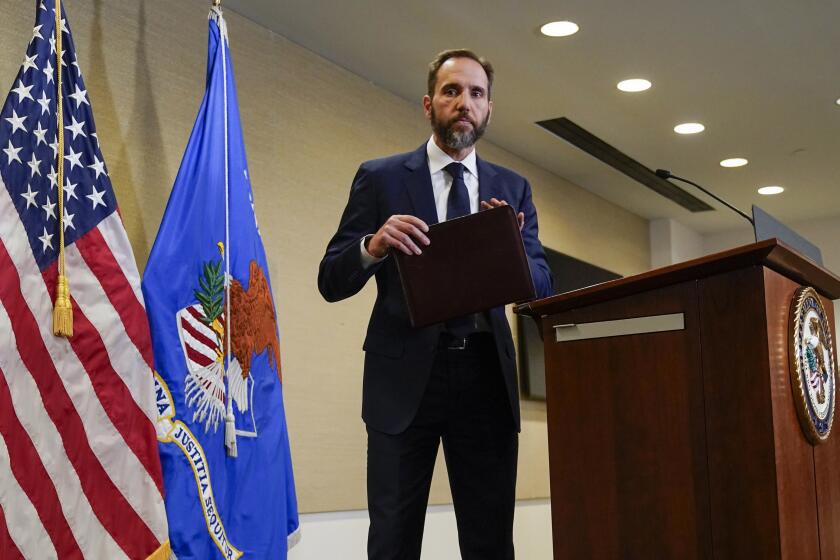It’s Earth Day. So how is L.A. doing in creating a sustainable city?
In honor of Earth Day, Los Angeles Mayor Eric Garcetti on Friday released the city’s first annual report on its “Sustainable City Plan” implementation. A reminder: The plan is L.A.’s first-ever sustainability strategy, and it contains dozens of short-, medium- and long-term goals for improving the city’s water, energy, climate, transportation, green jobs, housing and living wages through 2035.
The mayor’s report shows, encouragingly, that L.A. has made a great deal of progress over the past year and that the city is well on its way to meeting the vast majority of the plan’s 2017 goals.
That said, there is still plenty of room for improvement.
But first the good news. On the drought front, the city is on the verge of meeting its 20% water use reduction target by January 2017. Currently, average water use in L.A. is about 106 gallons per capita per day, a more than 19% reduction since the start of 2015. Refreshingly, our leaders led by example by reducing the city’s municipal water use by over 30%.
In its effort to fight climate change, Los Angeles met its 2017 goals for greenhouse gas emission reduction early (20% less than 1990 levels). The number of electric vehicle chargers (1,024 compared with the 1,000 target), the number of sewage spills (118 compared with the 125 goal), city procurement of zero-emission vehicles and the square feet of commercial space enrolled in the L.A. Better Buildings Challenge energy efficiency program (67 million square feet compared with the 60-million-square-foot target) are also all ahead of schedule. Plans to unveil a new bike-share program in downtown L.A. are expected to come to fruition this summer.
Sustainability is a lot more than the environment, however, and the city’s bold move to adopt a path to a $15-per-hour minimum wage and large proposed investments in reducing homelessness and providing additional low-income housing will hopefully improve the quality of life for many local workers and residents that need it most.
Now, however, we get to the rough stuff.
L.A. still has a long way to go in meeting its 2017 goals for “cool roof” conversions (only 712 of the 10,000 target) and water pipe infrastructure replacement (38 miles compared with the 95-mile target). It’s especially lagging on Property Assessed Clean Energy home energy efficiency retrofits (2,600 homes of the 12,500 goal). This is particularly disappointing since buildings and houses are our largest consumers of energy. Helping residents make their homes more efficient is one of the best ways to reduce our contribution to climate change.
The city also needs to jump-start its efforts in a big way to reach its goal of 900-1,500 megawatts of increased local solar power by 2025. Hopefully, the recent energy rate and long overdue water rate increases will provide the needed funds to get L.A. on track.
------------
FOR THE RECORD
A previous version of this story said L.A. plans to increase its local solar power by 900-1,500 megawatts by 2017. The target date is 2025.
------------
The past year also demonstrated that a major environmental crisis can create tremendous setbacks to the best laid plans. Over the space of a few months, the Aliso Canyon methane leak erased all our regional greenhouse gas emission reduction progress and further laid bare the vulnerability of our infrastructure. Other major environmental issues, such as greening the port and the goods trucking industry, continue to be incredibly challenging.
Those critiques aside, I remain hopeful about our progress toward L.A.’s 2017 plan goals. The city showed strong leadership compared with other large cities in dramatically reducing greenhouse gas emission impacts. Additionally, its hard work on sustainability helped catalyze similar efforts at the L.A. County level, where officials have plans to hire a chief sustainability officer and draw up a regional strategy similar to the city’s plan.
Things will only get more difficult from here. Some of the far more challenging 2025 and 2035 targets for sustainable water and energy will require unprecedented transformations of infrastructure that will cost billions of dollars. But the apparent departmental accountability demonstrated in pursuing the 2017 targets, and the city’s growing collaboration with business, academic and community-based organizations makes the mayor’s commitment to make “Los Angeles the most sustainable city in the U.S. and the world” seem possible.
Mark Gold is a director on the Metropolitan Water District Board representing Los Angeles and the associate vice chancellor for environment and sustainability at UCLA.
Follow the Opinion section on Twitter @latimesopinion and Facebook
More to Read
A cure for the common opinion
Get thought-provoking perspectives with our weekly newsletter.
You may occasionally receive promotional content from the Los Angeles Times.










